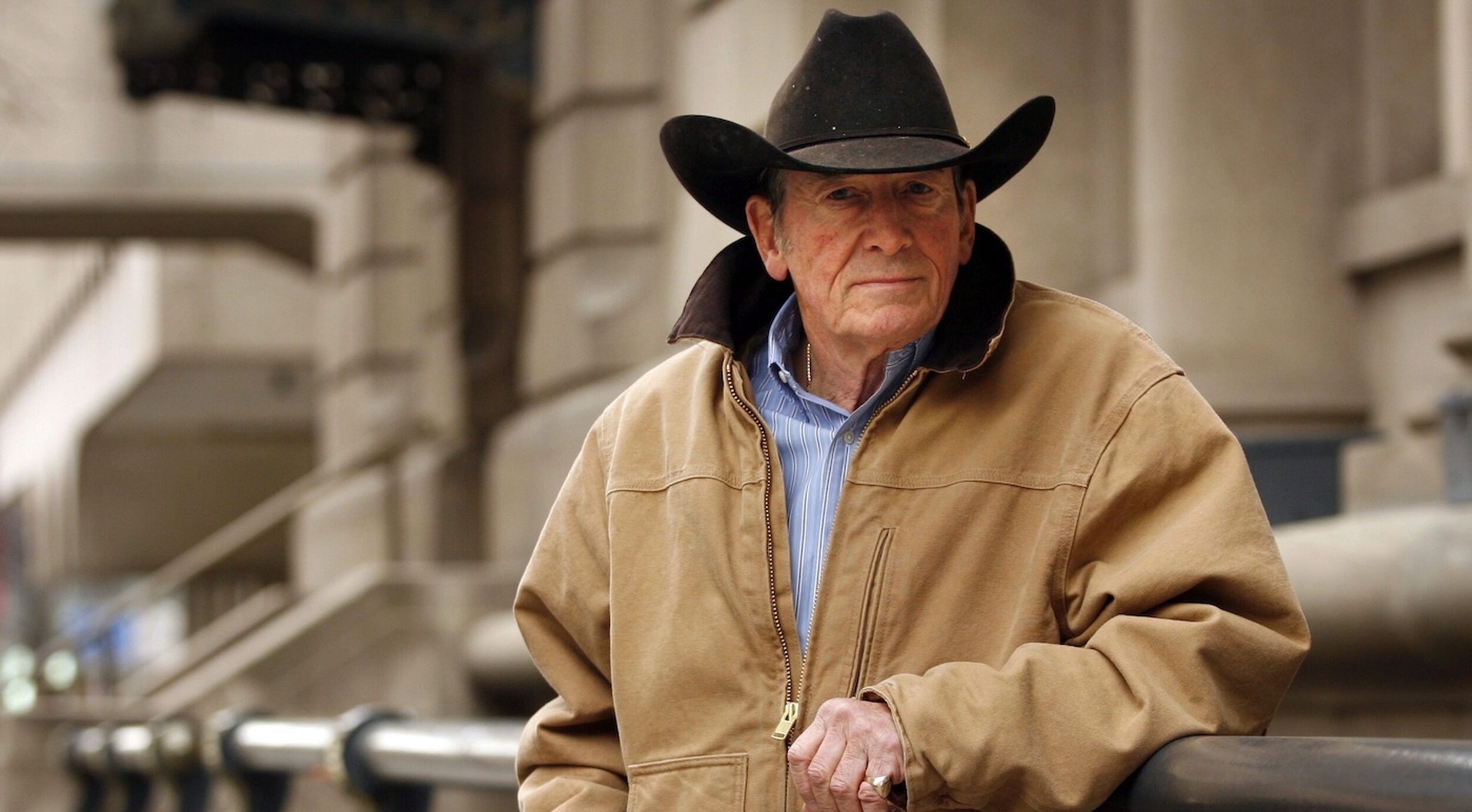
Ian Tyson in Calgary in 2008. THE CANADIAN PRESS/Jeff McIntosh
The gift: What Ian Tyson left us
We’ve lost a relentless chronicler of the West.
I was upfront with my editor from the outset: “I'm no cowboy.”
It was the end of 2009. I had just left my job as a news writer for Fast Forward Weekly, Calgary’s alternative weekly newspaper. I was going to be home with my daughter and try my hand at freelancing—and a book publisher wondered if I might want to ghost write a book with Ian Tyson, the legendary western singer.
My editor offered this in the way of reassurance: “You don't have to know every darn thing about cowboys and ranching going in...”
I did, however, need to know my subject. So I went to Recordland in search of the Tyson LPs that I remember my mom putting on when I was growing up. The one with “Navajo Rug,” for sure, and maybe one or two others.
I snagged Old Corrals and Sagebrush (1983) and Cowboyography (1986) for $10 each, went home, and put them on, listening carefully to the songs. Ian sang of “walking through the Calgary morning where the Rockies turn rose.” On “Alberta’s Child,” Ian evoked images of cowboys spinning “old Wilf Carter 78s” and doing “dumb stuff like chores when it's twenty below.” One tune was an ode to the great Montana painter and artist Charlie Russell; another marvelled at the coyote.
His fans in the West saw themselves, and their lives, in his songs. He was one of them.
This was music that was unapologetically and specifically regional. Songs that were of this place. It felt right to have rooted those LPs out of the musty stacks at Recordland.
My next task was to drive to Ian's ranch east of Longview, introduce myself, and see if I might hit it off with this famously cantankerous cowboy.
With much trepidation, I rang the doorbell at his log ranch house, with its large west-facing windows that offered a prime view of the Rockies. Over coffee, we quickly determined that we could collaborate on this project. He handed me a box of his more recent CDs—the best of which was, in his estimation, Lost Herd (1999).
We would not be working here, however. We would work mornings in his stone house a little down the road. Built in the 1920s, its walls were more than a foot thick, and this is where Ian did his writing and some recording. Often, in the morning, Ian would walk between the two; he titled his 2005 album Songs From The Gravel Road.
And so we got to it. Two or three times a week, I would rip south on Deerfoot Trail, through Okotoks, to interview Ian at the stone house. Then I would drive back into Calgary and furiously transcribe our conversations at a coffeeshop in Bridgeland, a few blocks from the old Calgary General Hospital site—the place where, in 1956, Ian taught himself to play guitar at age 22.
He learned by figuring out how to play Johnny Cash’s “I Walk The Line” while recovering from a rodeo injury. (Fittingly, Cash would eventually cover Tyson’s “Four Strong Winds,” released on Cash’s posthumous 2006 album American V: A Hundred Highways.)
Over the next few months, I immersed myself in the seemingly disparate worlds of cutting horses and the New York folk scene of the 1960s. I read Lonesome Dove and the stories of acclaimed American writer and horseman Thomas McGuane, a friend of Ian's, who often writes fiction for the New Yorker.
Ian was a New Yorker freak; there were stacks of them in both his home and the stone house. “That’s where you go for good writing,” he told me.
It was one of many ways that one era of his life, in a city that couldn’t be any more different than Longview, Alberta, informed the other.
Four strong winds
I quickly came to understand that Ian lived and wrote from a truly unique juncture. I think of it in terms of his east-west journey and his later north-south one.
There was the east-west journey of his younger years. Born in Victoria, B.C., in 1933, he read the cowboy books of Will James as a boy and looked up to the Indigenous cowboys of the region. Their work with horses captured his imagination, contrasting sharply with the dull suits of a government town. After art school in Vancouver and bronc riding in B.C., he drifted east to Toronto, where he met Sylvia Fricker.
Their duo, Ian & Sylvia, quickly became a hot act in the lively coffeehouse scene of the time. With their stars on the rise, they moved to New York City in 1961. There, Ian wrote “Four Strong Winds” and moved in the same Greenwich Village folk-revival milieu as Bob Dylan, Buffy Sainte-Marie and Joan Baez. In 1964, Ian and Sylvia got married and soon had a son, Clay. In 1969, Judy Collins covered one of Ian’s songs, “Someday Soon,” to wide acclaim.
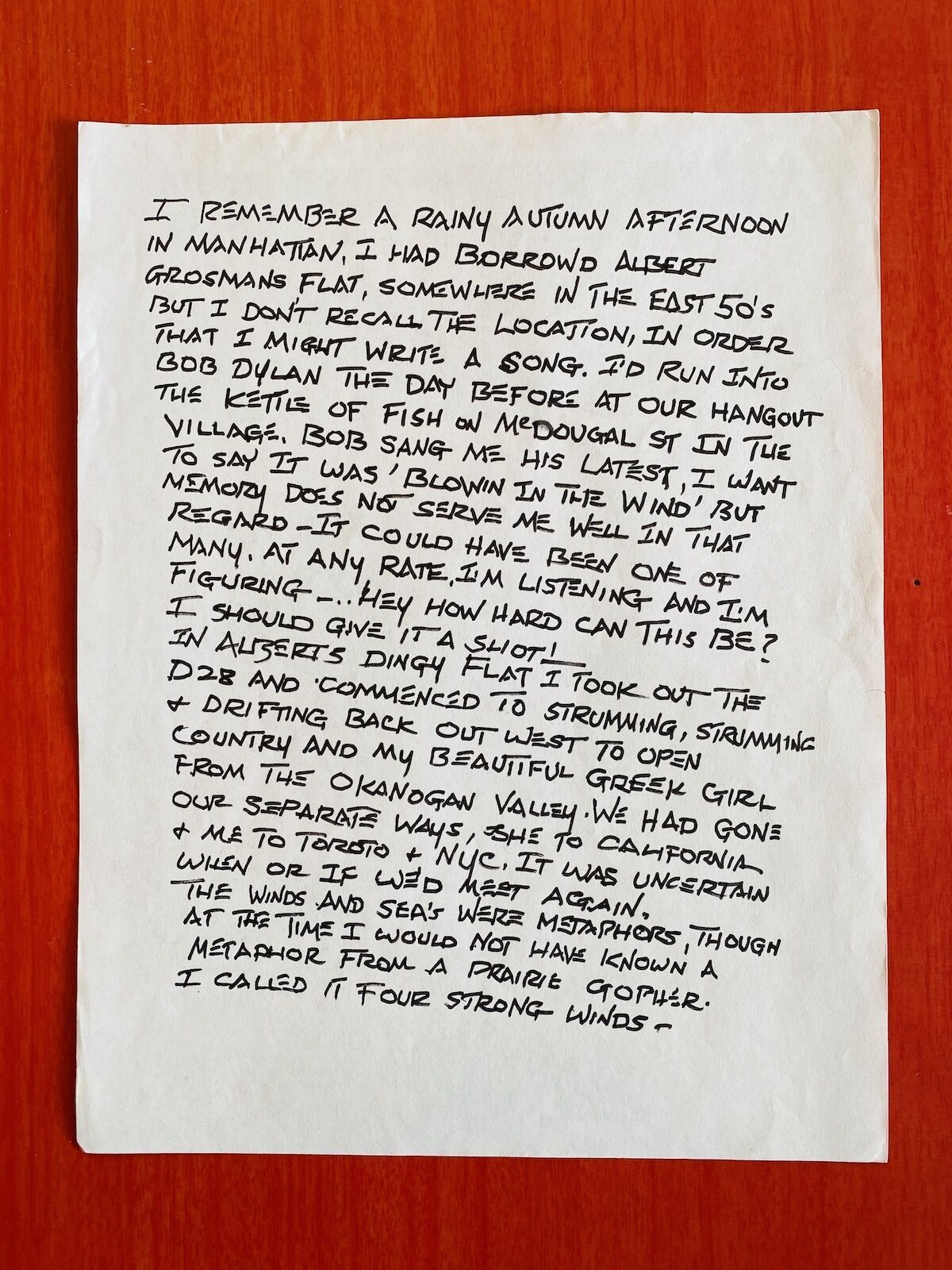
But the folk-revival era had waned. Together with Sylvia, Ian formed a short-lived country rock band, Great Speckled Bird, that put out one album in 1970 (which includes a song called “Calgary”). Great Speckled Bird played the Festival Express train tour across Canada with acts including the Grateful Dead, the Band and Janis Joplin.
The 1970s were challenging for Tyson. Ian & Sylvia ended as a music act—and soon, as a couple. Stompin Tom Connors was on the rise, as was one of Tyson’s mentees, Gordon Lightfoot. Ian, now in his 40s, struggled to see where he fit in musically. He had his own half-hour TV show in the early ’70s, The Ian Tyson Show, but couldn’t seem to land a hit song. At his farm in Ontario, Ian started putting his energy into cutting horses, a type of competition that involves skilfully isolating a single cow from the rest of the herd.
In 1978, disillusioned with life in Ontario and the music industry, he moved west to Southern Alberta to work at a Pincher Creek ranch. His songwriting was taking on an increasingly western flair; he was singing about Texas trail herds, chuckwagons at the Calgary Stampede and the disappearance of big ranches. He put in time playing week-long stints in Calgary at Ranchman’s on Macleod Trail, where, in his recollection, his music was mostly ignored. The Calgary gigs were a grind. But at Ranchman’s he met his second wife, Twylla Dvorkin.
He was singing about Texas trail herds, chuckwagons at the Calgary Stampede and the disappearance of big ranches.
The 1980s changed everything for Ian. The film Urban Cowboy (1980) helped make cowboys, and their music, popular again. In 1985, Ian and his band traveled south to Elko, Nevada, for a new event called the National Cowboy Poetry Gathering. There, he discovered a flourishing oral tradition of western story and song—and an audience that was hungry for the songs he’d already written. They brought their cow camp poetry; he brought his guitar. Elko would become an annual pilgrimage for him.
“I realized I could leave Ranchman’s behind,” said Tyson. Now in his 50s, he was about to find his time and place. Again.
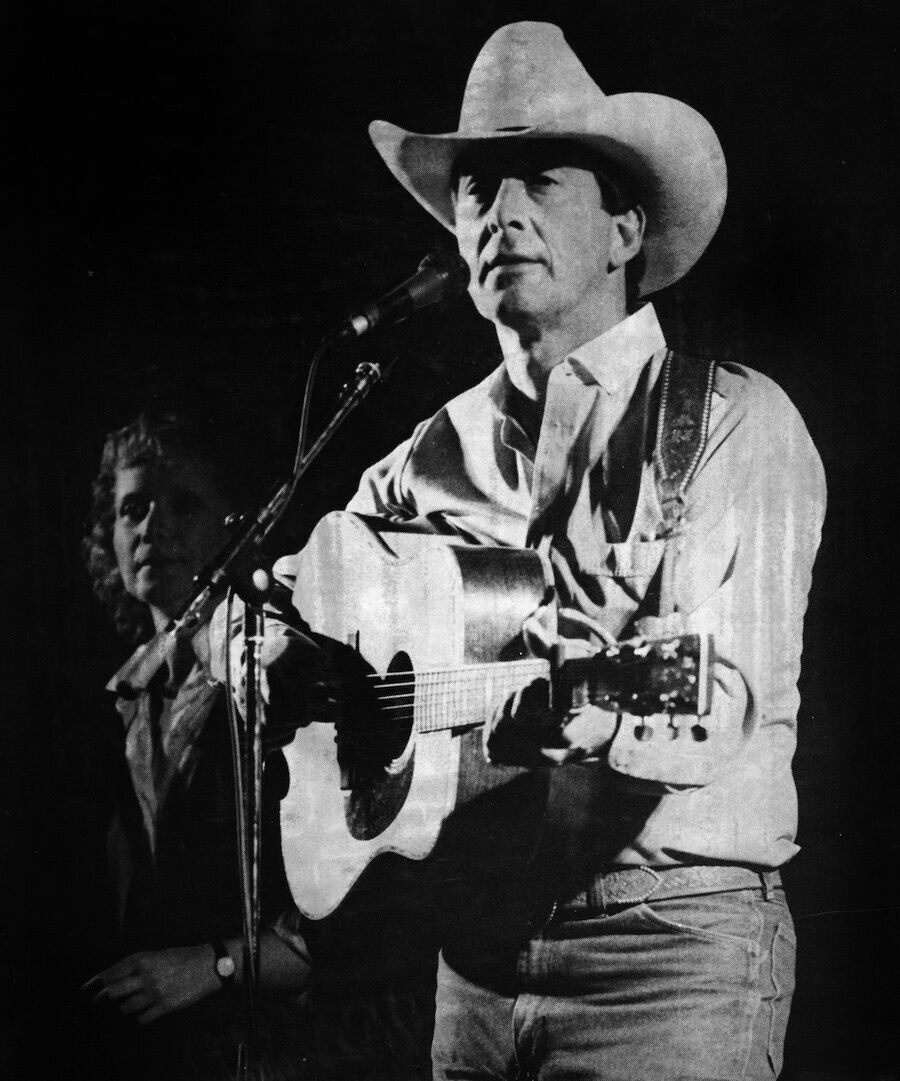
Tyson's north-south journey
With Cowboyography (1986), which was recorded in Calgary, Ian finally found the critical and commercial success he’d long sought. The album opens with “Springtime,” an evocative song describing the sights and sounds of Southern Alberta in April—bald eagles in cottonwood trees, brown hills, magpies “ganging up everywhere,” a big chinook blowing in.
Ian lists off, by name, his ranch neighbours pulling calves after making it through another winter “on the northern range.”
He re-cut an old Ian & Sylvia song, “Summer Wages,” which became a fan favourite. And he finally landed the hit song that had eluded him for years: “Navajo Rug,” written with Tom Russell.
Cowboyography exploded and went platinum in Canada. “Navajo Rug” became a radio staple with its catchy and memorable chorus (Aye aye aye, Katie/Shades of red and blue...). Ian and Twylla got married that same year, and soon had a daughter, Adelita.
He was an unapologetically regional songwriter whose music resonated far beyond Alberta. To quote one of his earlier songs, Ian’s true love was the West—on both sides of the Canadian-American border. Cowboy culture, he lamented, never recognized that arbitrary line, and he was no fan of it either.
The music of Ian Tyson spilled over the border like it didn’t exist. His people were in Longview, Alberta, and Elko, Nevada, and the many forgotten backroads and towns in between where people had Cowboyography cassette tapes in their trucks.
Ian trusted these people—people, by and large, with fading economic and cultural cachet in an increasingly urbanized society. And they trusted him, because he was writing specifically for and about them. His fans in the West saw themselves, and their lives, in his songs. He was one of them. It was something they were not used to.
The music of Ian Tyson spilled over the border like it didn’t exist.
Ian had a complex relationship with “the West.” He didn’t love the phony cowboys popularized by Urban Cowboy. Yet he also acknowledged that the romance and reality of cowboy life have always been blurred, and that Hollywood and cowboy culture were forever influencing each other—and that he directly benefited from this phenomenon. As a kid, he himself had been lured into cowboy life by seeing Gene Autry and Roy Rogers on the big screen at the Rio in Victoria.
In some quarters, Ian was seen as popularizing the West and thereby contributing to its ruin. Ian countered that an idealized West, completely untainted by romance, was a fiction. Like Guy Weadick, who founded the Calgary Stampede more than a century ago, Ian understood that the cowboy identity has always involved a degree of contrivance—and that people “playing cowboy” might just keep the West alive a little longer.
A rich repository of cowboy tales
The two perpendicular lines of Ian’s life—east-west and north-south—intersected in the middle of nowhere: a ranch an hour southwest of Calgary, not far off Alberta’s picturesque Highway 22, also known as the Cowboy Trail. He bought land here largely with a royalty cheque from Neil Young’s cover of “Four Strong Winds” on Comes A Time (1978).
This ranch amid farmland is where Ian would unearth stories for songs. Sometimes sunrise on the mountains was enough to do it. Sometimes it was some bit of regional history, or a scrap of conversation in a bar. Sometimes it was a trip down Texas back roads to some cattleman’s grave, where cowboys would untie the wild rags from their necks and leave them flapping in the wind “like some old-time cowboy shrine.”
Often it was a book. Ian loved good writing: Annie Proulx, Jane Jacobs, Cormac McCarthy. But he was equally enthusiastic about stuff you’ve never heard of. He was always researching some facet of the West. Some years ago, he eagerly pressed a copy of Jane Lambert’s book Charlie Russell: The Cowboy Years into my hands, and told me I absolutely must read it (to my discredit, I have not—yet).
Over the years, he built an impressive library of the West. It was a crucial part of his rich repository of cowboy stories—the repository from which, over time, flowed songs. Songs like “The Ambler Saddle,” a little-known Tyson number but one of my favourites, which tells the story of Jerry Ambler, a saddle bronc rider from Minburn, Alberta. The song is narrated from the perspective of Ambler’s saddle, which was lost after Ambler got killed in a car accident in 1958. The saddle was eventually rediscovered and ridden to new glory with Cody Bill Smith, another bronc rider. Ian Tyson made sure to chronicle this obscure story of “rawhide, wood and leather” being passed from cowboy to cowboy.
Then there’s “Yellowhead to Yellowstone,” on the 2008 album of the same name, written with Stewart MacDougall. The song is from the perspective of a wolf that has been relocated far from home as part of a conservation program. By now, Tyson’s voice had become more ragged and raspy. Like a raven, he said. Now in his 70s, his family relationships were also strained (Ian and Twylla divorced). Ian lived alone with his horses and longhorns.
Partway through “Yellowhead to Yellowstone,” Ian does something brilliantly unexpected: he switches to a lower key and a slower tempo, as the old wolf is aging alone, drained of youthful vigour (I led 'til they would let me lead no longer/I turned my tail and wished that I was younger). You didn’t have to listen hard to hear the parallels between singer and subject.
Ian Tyson made sure to chronicle this obscure story of “rawhide, wood and leather” being passed from cowboy to cowboy.
“Bob Fudge,” from Live in Longview (2002), was derived from a book about an old-time cattle driver. Ian narrates an epic cattle drive from Texas to Montana through Fudge’s eyes, before there were cars or bridges across rivers:
In the cold roiling waters
And the wild plunging cattle
There was many a young man
Took leave of his life
These songs tell stories of the West in sweeping yet singular narratives. The relentless precision and regionality of Ian’s songs gave them their strength—the cattle drive from Lampasas County to the Little Bighorn, the specific saddle, the dying wolf in Wyoming. Springtime in Alberta.
The people Ian wrote about were not well-known outside horse circles. Cowboy poet Ross Knox. Chuckwagon driver Kelly Sutherland. Saddle bronc riders Casey Tibbs, from Fort Pierre, South Dakota, and Kaila Mussel, from Chilliwack, B.C. If you happened to know the names and places, the songs were particularly special; if you didn’t, you now knew a little more about the colourful characters that make up the cowboy West.
Even Ian’s old songs took on new regional meanings over time. He had a love-hate relationship with “Four Strong Winds” over the years, refusing at times even to play it in his Ranchman’s days. But in 2005 he was invited to perform it at the Edmonton memorial of four young RCMP officers who were killed near Mayerthorpe, Alberta, where it took on a new resonance. A few months later, “Four Strong Winds” was selected as the greatest Canadian popular song in a CBC Radio contest.
Locally, Ian used his celebrity for conservation efforts in Alberta, fighting the damming of the Oldman River in the late '80s (a battle that was ultimately lost) and industrial development in the eastern slopes of the Rockies. It's a tradition that Tyson protégé Corb Lund has continued, with Lund's outspoken opposition to coal mining in the eastern slopes in recent years.
In 2006, Ian joined a few local ranchers—friends and neighbours—in protesting a Calgary oil company's plans to drill in the eastern slopes. They showed up in downtown Calgary on horseback. To drive the point home, Ian rode Pokey, his bay mare, up the steps of McDougall Centre, the Alberta government's downtown Calgary outpost. He was a little worried Pokey would buck him off. But both horse and rider had a blast.
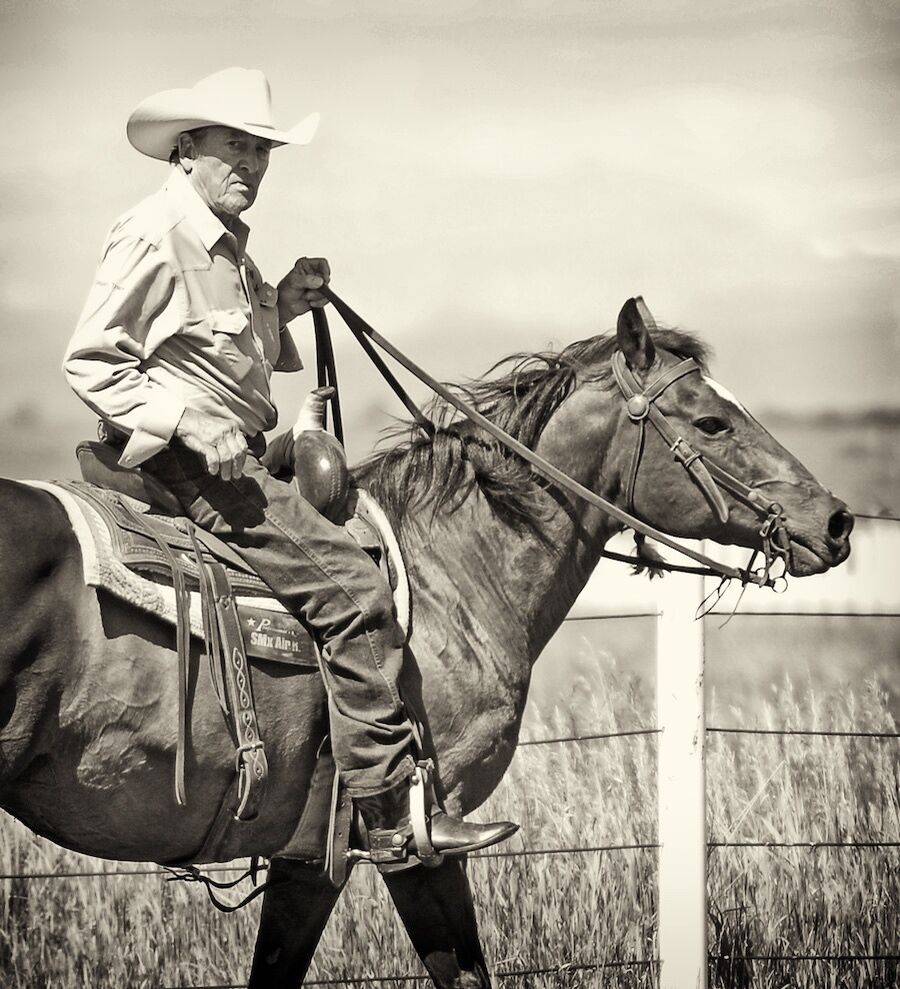
The guitar lesson
Ian Tyson was a complicated and often difficult character. Over time, as we worked together, a book took shape. But near the end, tensions escalated. At a certain point, the whole project seemed precarious, as most creative projects inevitably become. I grew concerned that we might throttle each other.
The deadline loomed. My view was to push through single-mindedly, stubborn cowboy ways be damned. But a friend and mentor of mine, David Finch, proposed a different approach at this crucial moment: learn something from the old singer.
David, who has authored many books of his own on Alberta history, advised me to set aside the writing for a moment. “Why don’t you take your guitar out there next time you go?”
Say what?
Take your guitar, said David. Ask Ian to teach you a song.
Well, why not.
That weekend, I pulled up beside the stone house, as I always did, got my guitar out of the car and walked inside—with a sense of trepidation, and a little mischievousness.
Ian took in the scene. “What is that?” he said.
“It's Saturday,” I said. “I figure we can play a few songs before we get down to work.”
He kept poring over his pages on his big wooden desk, fretting about the most recent chapter we’d been working on.
“You gonna play me something?” he growled.
“Some Ian Tyson,” I quipped.
“How about ‘Wildwood Flower.’”
I gave it my best shot, nervously fumbling through the song—a classic folk tune made famous by the Carter Family, and one I learned to play with my grandpa in Valentine, Nebraska. (“Valentine—now that's a real cowtown!” Ian would say.)
“You're playing too fast,” Ian said. “Slow down.”
He got his guitar and he played a harmony to my melody. I started to relax, slow down and play a bit better as we both struggled to make it through the song—me with my rudimentary skills, him with his arthritic hands that had not yet warmed up for the day.
“Let's try M.C. Horses,” I suggested. It's an upbeat lament, brilliantly covered by Corb Lund, about an Oregon ranch being broken up and the horses sold off. Ian wrote it after overhearing two cowboys talking about the sale in a bar. “What key do you play it in?”
“I play it in A, but I always use a capo.” He put his capo on the second fret and strummed a G chord.
We went on like this, working through more songs: “La Primera,” which tells the story of the arrival of Spanish mustangs in the Americas, and a new one, “Song In A Dream,” which I've always loved. Ian recommended that one for the simplicity of its chords.
We played for about 45 minutes that morning.
Ian took the measure of the situation. “Young Jeremy shows promise but needs to apply himself,” he joked. “If you're serious about playing old-time country stuff, you should use a click (metronome). They're cheap like borscht.”
“If you're playing chords, you're setting the rhythm—and you need to learn how to do it well. The click will help you do that.”
After that, we got back to work on the book. And sure enough, it was easier from there.
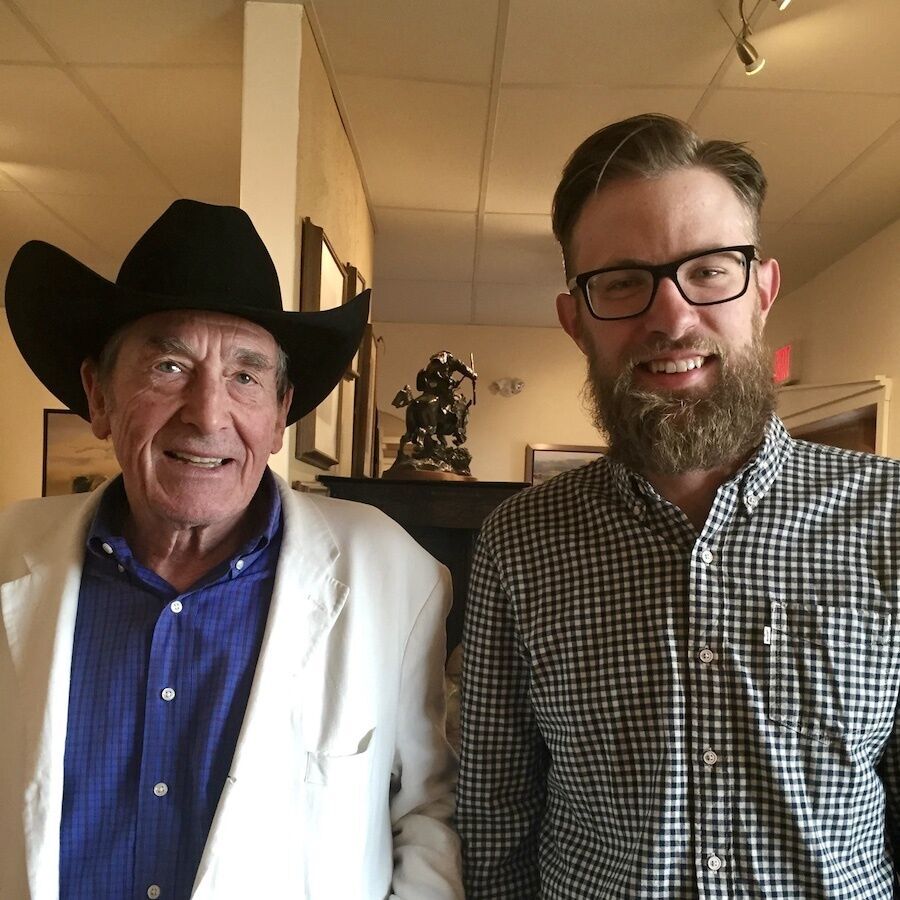
The day Ian gave me that guitar lesson, before I drove back to Calgary, Ian leaned against the fence outside the stone house and gave me some further advice.
“The problem is most people try to play too fast, even when they're doing waltzes,” Ian said. “Get a click and set it slower than the tempo you think you should be playing. Then play along at that slower speed. That's the way to learn.”
I don’t think I play guitar much better than I did that day at the stone house twelve years ago. I still blunder on too fast. I do, however, remember how Ian chronicled the changing world around him. Be specific and deliberate. Don’t avoid obscure stories; embrace them. Know your people. Write for them without apology. And don't turn out filler (“I don’t crank stuff out,” Ian told me). Make it worth listening to, always.
David’s sage advice has stuck with me too. When dealing with old cowboys, sometimes the best thing you can do is let the songs in.
Jeremy Klaszus is editor-in-chief of The Sprawl. He ghost wrote Ian Tyson's 2010 memoir, The Long Trail: My Life in the West.
Support independent Calgary journalism!
Sign Me Up!The Sprawl connects Calgarians with their city through in-depth, curiosity-driven journalism. But we can't do it alone. If you value our work, support The Sprawl so we can keep digging into municipal issues in Calgary!



